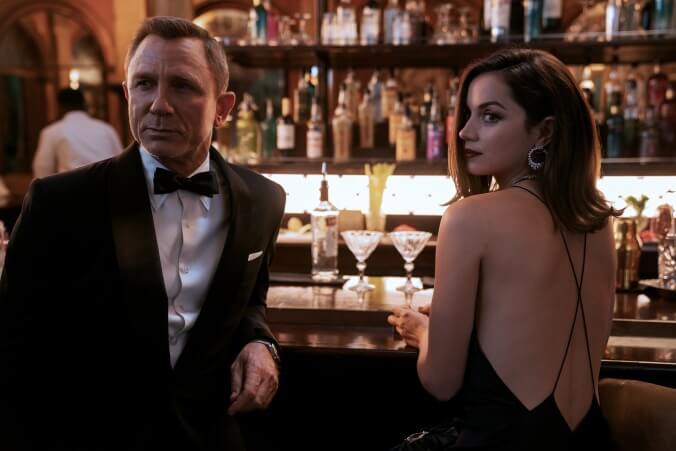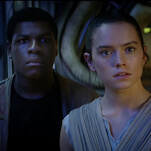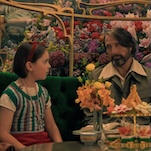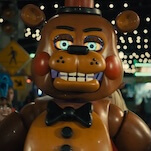Is this the Endgame of spy movies? It’s as sentimental and nearly as long, running a patience-taxing two hours and 43 minutes. And here, too, is a five-year time jump, finding a retired, heartbroken Bond living off the grid, forced to return to active duty at the emergence of a new global threat. Didn’t Skyfall go there already? It did, and more gracefully: That gleaming installment, the second big highlight of the Craig tenure (and, in general, a more fitting swan song for it), had some fun playing, however briefly, with the idea of a disgruntled and slightly rusty Bond. Here, British intelligence’s finest lurches back into the field with almost a perfunctory shrug.
No Time To Die’s danger is viral: a plague of nanobots that target a specific person (or people’s) DNA. Vaguely and coincidentally, this evokes the real worldwide medical crisis that delayed the film’s release for a year and a half. It’s also a rather confusing weapon of mass destruction, with rules that don’t make a ton of sense, even for a Bond movie—which is a problem, given how much the film ends up hinging on them. The heavy threatening to release this destructive force on the world is the vengeful, cadaverous, and well-named Lyutsifer Safin (Rami Malek, the third Oscar winner in a row to play a Bond villain). Safin gets a great introduction, in a misleadingly superb opening suspense sequence that recalls Halloween more than one of the franchise’s usual in-media-res prologues. After that, though, he reveals himself to be little more than a stock adversary, whispering threats with perpetual calm; Craig deserved a more distinctive final foe than this generic sociopathic terrorist.
There’s faint tension in the introduction of a replacement, Nomi (Lashana Lynch), with whom Bond playfully spars over ownership of the 007 codename. This is clearly a symbolic gesture, a generational torch passing meant to offer a rebuke to the historic white-dude chauvinism of Bond as a character and icon. And it might be easier to appreciate if the rookie agent weren’t relegated constantly to the sidelines, disappearing for long stretches to run offscreen errands. Perhaps there was scant room for her in a film that can barely find the time for its usual supporting roster, the home-office cavalry of M (Ralph Fiennes), Q (Ben Whishaw), and Moneypenny (Naomie Harris). Crowding an already overstuffed ensemble, No Time To Die wheels in once-quintessential archrival Blofeld (Christoph Waltz) for a single-scene verbal standoff. He’s meant to be scary behind glass, like Hannibal Lecter or something, but the cameo is a non-event—possibly because Spectre did so little to build Waltz up as the ultimate big bad of this Bondverse.
Like almost every actor that’s played the role, Craig has reached the point where he’s a little too long in the tooth for it. But it’s less his age than his effort (or lack of it) that shows: Where once he brought an invigorating balance of thuggish aggression and cucumber-cool wit, the star seems borderline bored in No Time To Die, as itchy as his character is to put the spy games behind him. His fatigue creeps into every corner: It’s there in the half-assed banter, in the been-there-exploded-that gadgets, in the fleeting checklist appearance by Craig’s Knives Out costar Ana De Armas as a second-tier Bond girl so obligatorily incorporated that she could be airlifted out of the movie with the most minimal of rewrites. The set pieces—the usual car chases and gunfights and climactic races through exotic lairs—are nothing special either. The most memorable is probably a single-take brawl up a flight of stairs; you want to ding it as an Atomic Blonde ripoff, until you remember that director Cary Joji Fukunaga did the extended-shot action sequence thing on True Detective years earlier.
If there’s been a legible emotional arc to this five-film, mini-franchise narrative, it’s the tug-of-war inside Bond himself. Can this ice-cold killer and ladykiller learn to love again—to rediscover the humanity hammered out of him through years of service and the formative betrayal of Casino Royale? The problem is that this final installment builds its stakes around a relationship it’s barely dramatized: Seydoux’s thinly sketched Madeleine is but a shadow of the dearly departed Vesper, a love interest so richly drawn by Eva Green that you could actually buy her getting through to a hunk of patriotic human weaponry like James Bond. No Time To Die is forgettable in all the places that usually count—it’s a Bond movie with little excitement or panache. All the film has to distinguish it is an uncharacteristically sappy ending, a late bid to jerk some tears after nearly three hours of boring us to them.









































